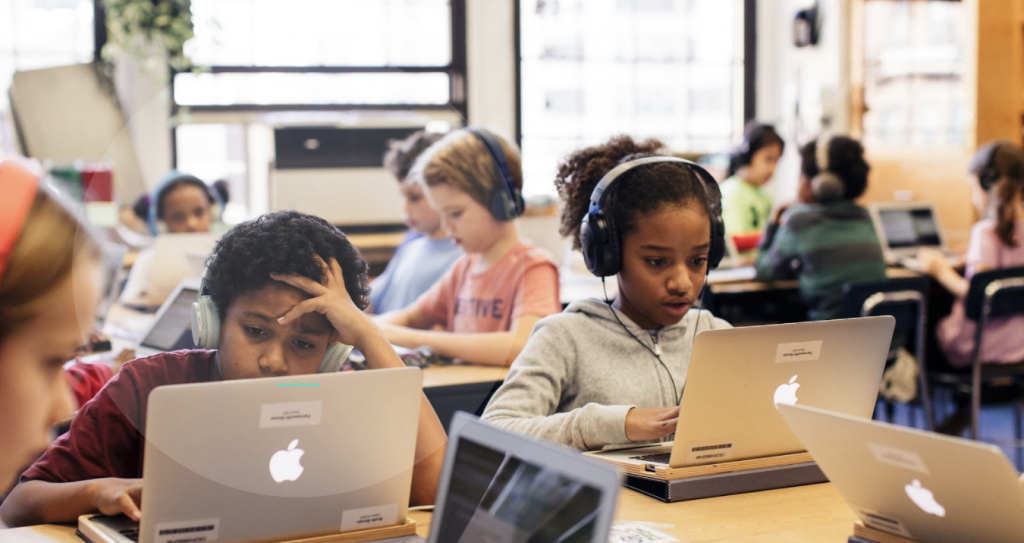The 6 Questions We Should Be Asking about the Future of Learning
My work as an educator has involved technology for over a decade. When working at a small school in Tanzania in 2006, I was in charge of a large internet computer lab of 30 computers. I also taught teachers how to use laptops in 2006 as a Teacher Technology Trainer.
One afternoon, I was helping a student in the internet lab. The whole class, led by a teacher, was instructed to be on an online math game of some sort. Unfortunately, though, the math exercise was lost on many of the students, who did not know how to operate the computers. Many students had never operated a mouse. I walked over to a confused student and discovered that she had 193 tabs of Internet Explorer open. Not only was she not learning math online, she also wasn’t learning how to operate a computer.
I was new to teaching, and from my time working in the internet lab, I learned that if technology is a tool within your lesson, your unit, your classroom, it should serve the overall purpose and augment the student learner experience. Even though my work was in technology at the school, I could not see how technology was necessarily improving the student learning experience. There needed to be deeper teacher training and stronger integration between technology and pedagogy. The question I had, and continued to explore in 8 years of teaching in the United States was, How might technology support deeper learning? Deeper learning outcomes include collaboration, communication, development of academic mindsets, and critical thinking. (These outcomes are also aligned with GOA’s core competencies that drive all of our student courses).
Joi Ito, Director of MIT’s Media Lab and co-author of Whiplash: How to Survive our Faster Future sums up well what I experienced in the internet lab in Tanzania: “Although recent changes in American educational policy have attempted to modernize the curriculum by bringing technology into the classroom, merely introducing new technology is not enough. In too many schools, teachers lack the time to learn new technology, or don’t have the institutional support to fully integrate it into the curriculum.”
Upon returning to the United States in 2006, I was hired to work at a small public school south of Seattle. The school was project and interest-based, and we had 1:1 student to computer ratio so high school students could manage their work. Students used technology to communicate with mentors, build resumes, and create and manage their work.
Gradually, big clunky computers made way to Google Chromebooks, giving us more space in our classroom. In the course of 8 years, WiFI was installed throughout the school and students were able to BYOD (bring your own device).
From 2006 to 2014, we saw big changes in the marketing of various edtech tools and solutions. The learner experience improved. We started using Khan Academy and other slick tools (like many schools in the US) but also stayed true to using Google Docs and then Google Drive (which remains my favorite place to manage my work). We used technology like people do at work – as a tool to helps us get our job done, learn and conduct research, and to connect and collaborate, to build communication skills, and to solve problems. The big insight: technology can power deeper learning.
In 2014, I first read the term blended learning. You can imagine my shock (horror!) at discovering organizations had come up with terminology to describe something that we had been doing, rather successfully, for 8 years, with no jargon. (Read my colleague Eric Hudson’s great piece on why the future of learning is beyond blended here). Now in 2018, we are no longer talking about blended learning. Why? At this point, many of our tech tools are an extension of ourselves. Our devices are a way (the way?) we interact with the world. Try to take a phone away from a young person and see what happens. It’s as if you have cut off their arm or their heart.
We are living our lives more and more online: The average American spends nearly half a day staring at a screen. A Nielsen Company audience report reveals that adults in the United States devoted about 10 hours and 39 minutes each day to consuming media in 2016. A 2017 study found that Americans spent over 4 hours a day on their mobile devices.
6 Questions We Should Be Asking about the Future of Learning
In the near future, we should support students and young people in experiencing what it’s like to learn in online and in person spaces, managing projects and their own work, much like how they are living their lives.
Given this reality and given our goal of preparing young people for the world we think they may inherit, what learning experiences can and should we as educators design for? What does learning look like in the modern era?
Six questions we are asking at GOA, specifically in our new professional learning course, Modern Learning Lab, are:
- How might we design modern learning experiences where students drive their own learning?
- How might we design learning experiences where students solve real world problems and engage in meaningful and relevant work?
- How might we design assessments that foster and inform learning?
- How might we design learning experiences that build connections and allow for collaborative meaning making and problem solving?
- How might we design learning experiences that foster learning in a variety of spaces and places?
- How might we design learning experiences that allow students to own and drive their own time and schedule and learn at their own pace?
These questions don’t center upon, nor are they dependent on, technology, though if technology is an integral part of our lives, some of the answers to these questions might lie in the use of technology. Some might not. The fact is, we don’t know the answers to these questions fully, nor do we know that they are most definitely the right questions. It’s in the spirit of collaborative inquiry that we encourage educators to come together to tackle, design, build modern learning experiences.
Share resources or ideas you have with us on any of the questions above @GOALearning on Twitter, or by emailing hello@globalonlineacademy.org with the title “modern learning.”
For more, see:
- 10 Education Predictions for 2018
- 50 Books for Rethinking School
- The Power of Networks: 10 Ways Schools are Tackling Innovation
Global Online Academy (GOA) reimagines learning to empower students and teachers to thrive in a globally networked society. Professional learning opportunities are open to any educator. To sign up or to learn more, see our Professional Learning Opportunities for Educators or email hello@GlobalOnlineAcademy.org with the subject title “Professional Learning.” Follow us on Twitter @GOALearning. To stay up to date on GOA learning opportunities, sign up for our newsletter here.

